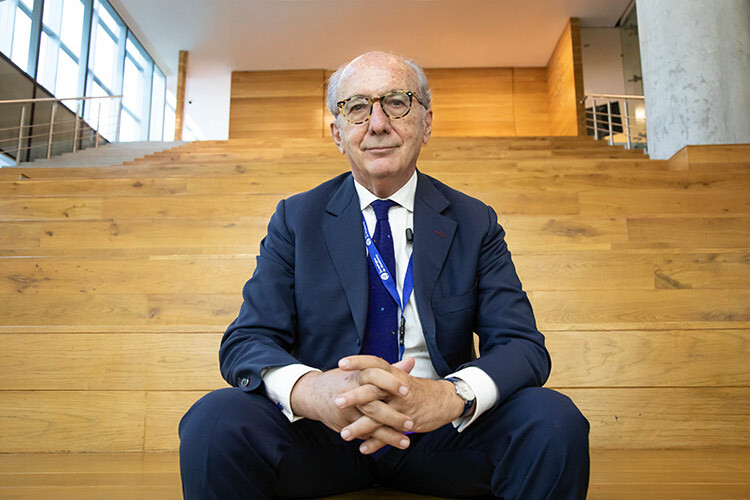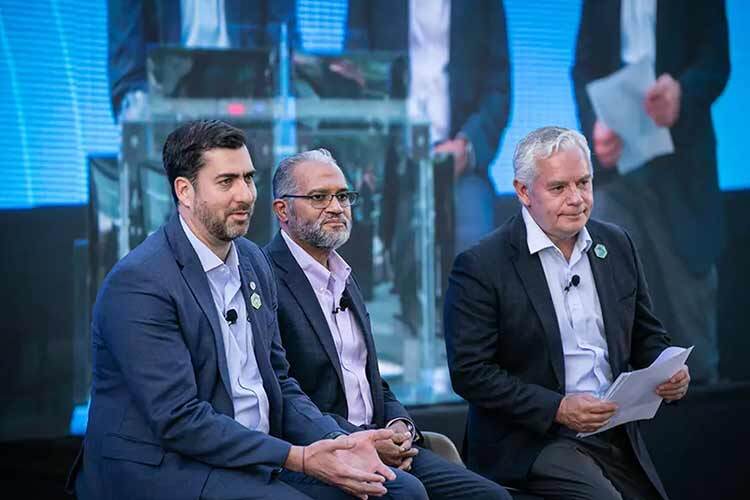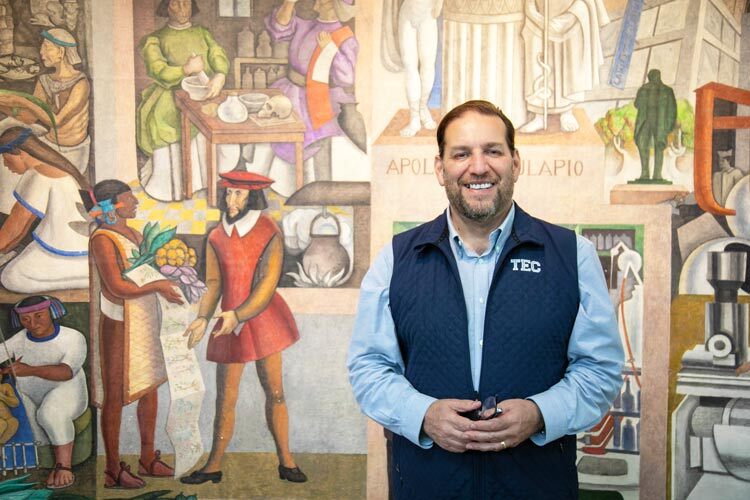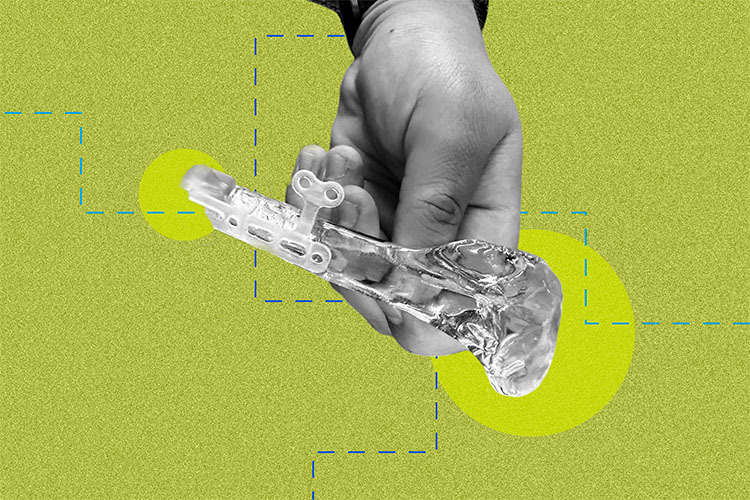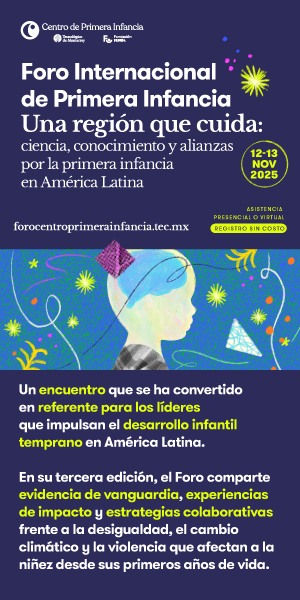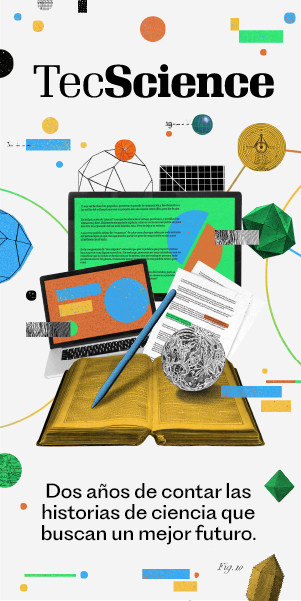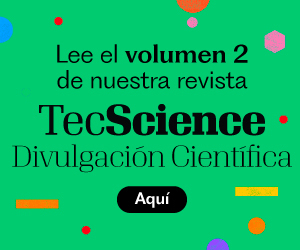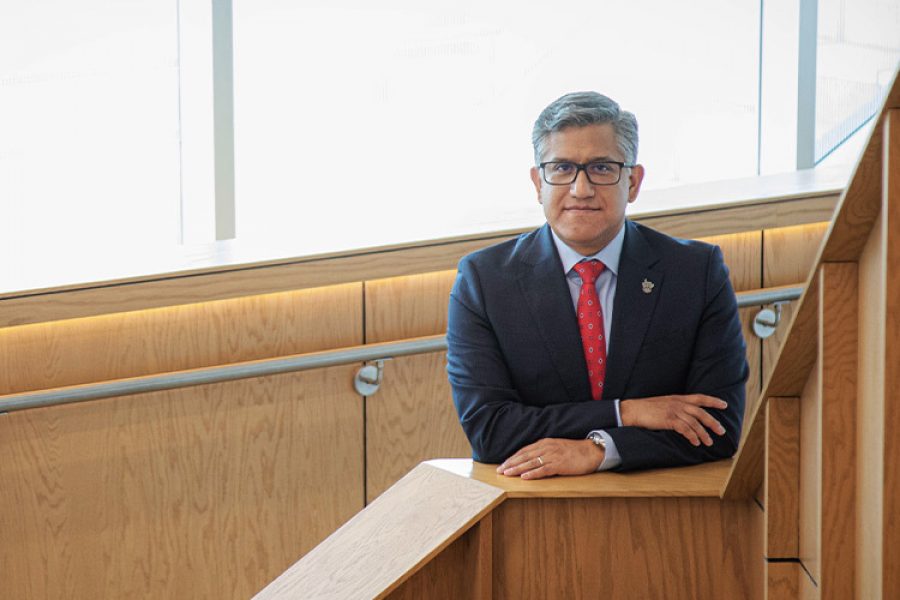Daring to innovate and start a business may require a touch of irrationality. That’s the perspective of Italian researcher Riccardo Viale, an expert in behavioral sciences.
Interviewed by TecScience during the Triple Helix Conference Monterrey 2025, Viale explains that certain cognitive biases—such as overconfidence or hyper-optimism—are not necessarily flaws. On the contrary, they can actually drive people to launch ventures, make decisions under uncertainty, and take risks.
“Speaking behaviorally, the behavior that allows a person to think about becoming an entrepreneur, more than rational, should be irrational,” says Viale. “It means that if one reasons rationally about the chances of becoming an entrepreneur of a successful business, nobody would take this risk, because the percentage of companies that succeed is very low.” That’s why he believes it’s essential for young people to develop a dose of hyper-optimism, an overconfidence in their abilities, and an illusion of control over outcomes. These biases, he says, can serve as the psychological fuel that drives entrepreneurial action.
Viale argues that universities shouldn’t just teach technical knowledge—they should also work to cultivate an entrepreneurial mindset in their students. He suggests using tools from behavioral science to boost students’ confidence, help them overcome fear of failure, increase their risk tolerance, and build the determination needed to face challenging environments.

From Bounded Rationality to the Drive to Innovate
Viale also advocates for cultivating a kind of functional bounded rationality: a way of thinking that, while not entirely logical, spurs people into action. This concept is one of the cornerstones of behavioral science, an interdisciplinary field that explores how people think, decide, and act under the influence of emotions and cognitive biases. It’s also the area in which Viale has worked for decades.
His interest in this approach began during his medical studies and psychiatry specialization at the University of Turin, where he wrote a thesis on schizophrenic thinking and the logical mechanisms underlying the condition. Later, during his PhD at the University of Oxford, he researched cognitive errors, biases, and reasoning in people without mental disorders, comparing his findings to earlier studies on psychiatric patients. He discovered that the differences between the two types of reasoning were not as significant as previously thought—an insight that deeply fascinated him and ultimately shaped his career.
Over time, Viale brought this perspective into the realm of economics and social sciences to better understand how people make decisions in real-world settings. He revisited the work of Herbert Simon, Nobel Laureate in Economics and widely regarded as the father of artificial intelligence, who introduced the concept of “bounded rationality.” Unlike classical economic theory, which assumes that individuals make perfectly rational choices, Simon’s model acknowledges that we make decisions under pressure, with limited information, and while navigating inevitable biases that shape our judgment.
“Bounded rationality relies on bias and distortion—but in this case (entrepreneurship), they are biases and distortions that are adapted to the task,” Viale explains. “Without them, you wouldn’t have the will or the motivation to go ahead.”
Nudges and Innovation Ecosystems
In this context, a concept that complements bounded rationality is nudging—small behavioral interventions that subtly steer people’s decisions without restricting their choices. Viale explains that these tools help build “choice architectures,” or environments that influence how decisions are made. These can range from public policy initiatives to physical spaces—such as innovation ecosystems—designed to encourage certain behaviors and guide decision-making.
For example, there are physical interfaces between students and companies, like Silicon Valley, where individuals can connect and interact with investors. At Tec, similar cases include the Monterrey Innovation District and the Tlalpan District, both of which act as nudges by encouraging interactions and conversations that can spark new entrepreneurial ventures.
“Another type of nudge is the use of descriptive social norms—such as telling the success stories of young students who became entrepreneurs,” Viale explains. “This kind of narrative can nudge others to imitate them. It also helps strengthen the reputation of those who succeeded, so they can become role models. These are behavioral tools that can be further developed to support the creation of new companies.”
The Behavioral Triple Helix
These tools can also be applied to the way different stakeholders—such as universities, industries, and governments—collaborate within innovation ecosystems.
Viale is the founder and secretary general of the Triple Helix Association, an international organization that promotes cooperation among these sectors to drive innovation. The association was also responsible for organizing the conference at Tec. In his role, Viale proposes an evolution of the traditional Triple Helix model by incorporating a behavioral perspective—one that takes into account how biases, emotions, and perceptions influence the way these actors engage with one another.
“I introduced what I call the Behavioral Triple Helix,” Viale explains. “It refers to how we can support stronger collaboration between university students—or recent graduates—and investors, and how governments can help strengthen this approach. From a behavioral science perspective, universities should shape students’ mindsets so they see themselves as potential entrepreneurs, capable of taking risks and facing challenges. At the same time, governments should enable the creation of real interfaces between academia and business. In this way, we can talk about behavioral projects.”
Public Policy and Entrepreneurial Culture
Viale emphasizes that governments need to develop mechanisms and incentive tools to create choice architectures that strengthen collaboration between universities and businesses. From this perspective, it’s crucial for policymakers to understand how to improve those interactions and design incentives that go beyond the financial—symbolic incentives that validate and support this kind of collaboration. At the same time, universities should adopt policies that facilitate the inclusion of investors and entrepreneurs within their ecosystems to spark new ventures.
To enhance cooperation among the actors in the Triple Helix, Viale argues that research should focus on identifying the contextual factors and cultural variables that make it easier to create new businesses in specific regions. There are no one-size-fits-all solutions for innovation, he says—each region has its own conditions, traditions, and areas of expertise. In Mexico, for example, where there is a deep-rooted tradition in agricultural activities, the country’s innovation potential may lie in introducing new technologies to that sector and promoting knowledge transfer from laboratories to businesses.
From Cognitive Science to Neuroscience
In addition to his academic career and leadership in the Triple Helix Association, Viale is also the founder of the Herbert Simon Society, which promotes the advancement of fields ranging from artificial intelligence and cognitive science to management theory, organizational studies, and cognitive psychology. In his native Italy, he established the Italy Behavioral Insight Team to encourage the use of behavioral tools in government for improving public administration performance. He also founded the COTEC Foundation, with branches in Italy, Spain, and Portugal, chaired by the heads of state of each country and dedicated to promoting innovation.
“The future of behavioral science is in connecting it more and more with neuroscience and the science of the body,” says Viale. “A growing and increasingly relevant approach is embodied cognition, which shows that we make decisions and solve problems not only with the mind, but with the whole body in relation to the environment.”
Did you find this story interesting? Would you like to publish it? Contact our content editor to learn more at marianaleonm@tec.mx
